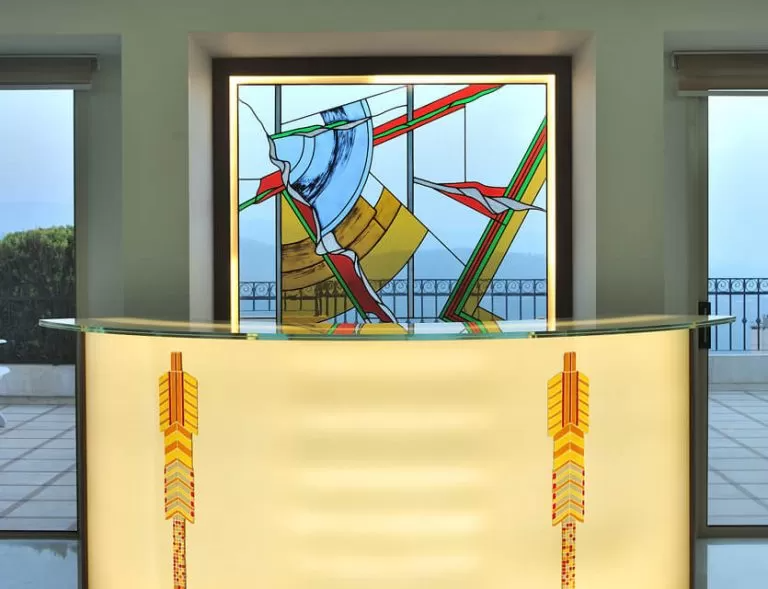Glass bending techniques allow for the creation of curved and shaped glass surfaces; adding versatility and aesthetic appeal to architectural and design projects. These techniques involve heating glass to a high temperature and then shaping it using molds or gravity before cooling it to maintain the desired form.
Heat bending:
Heat bending also known as hot glass bending or thermal bending, involves heating glass to its softening point and then shaping it using molds or other tools. The glass is heated in a temperature-controlled kiln or furnace until it becomes pliable, allowing it to be bent or formed into the desired shape. Once the desired shape is achieved, the glass is gradually cooled to room temperature to anneal it and prevent stress or distortion.
Press bending:
Press bending, also known as compression bending, involves heating glass to its softening point and then pressing it between two molds to form the desired shape. The molds are typically made of metal or ceramic and are designed to match the desired curvature of the glass. Press bending is commonly used to create complex shapes and curves with tight tolerances, making it ideal for architectural and automotive applications.
Slumping:
Slumping, also known as gravity bending or sagging, involves heating glass until it becomes soft and then allowing it to sag or slump into a mold under its own weight. The mold is typically made of ceramic or stainless steel and is shaped to the desired curvature of the glass. Slumping is commonly used to create shallow curves and irregular shapes, such as bowls, plates, and decorative art pieces.
Roll bending:
Roll bending, also known as radius bending or curved bending, involves heating glass and then passing it between a series of rollers to gradually bend it into the desired shape. The rollers are typically adjustable and can be set to different diameters to create curves of varying radii. Roll bending is commonly used to create large-radius curves and arcs for architectural and structural applications.
Drape bending:
Drape bending, also known as gravity sag bending, involves heating glass until it becomes soft and then draping it over a mold to create a curved or sloped surface. The mold is typically made of refractory material or stainless steel and is shaped to the desired curvature of the glass. Drape bending is commonly used to create curved glass panels for architectural facades, skylights, and canopies.
